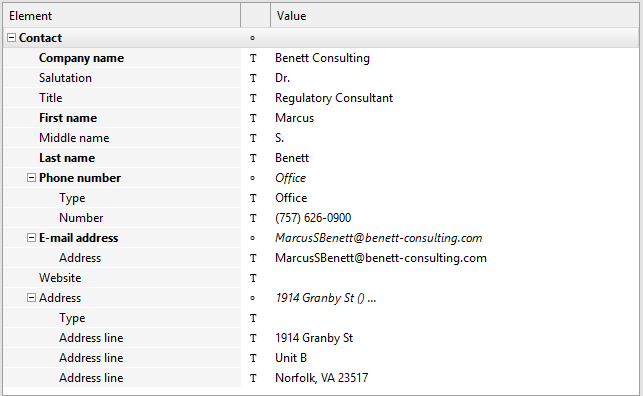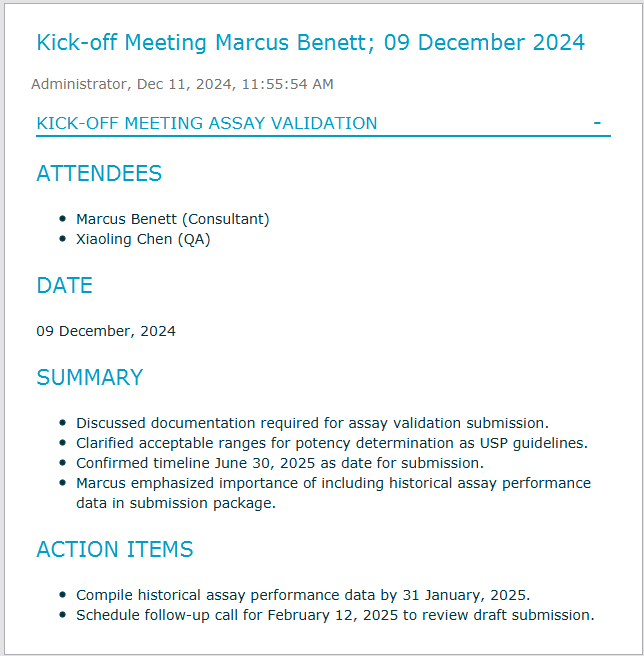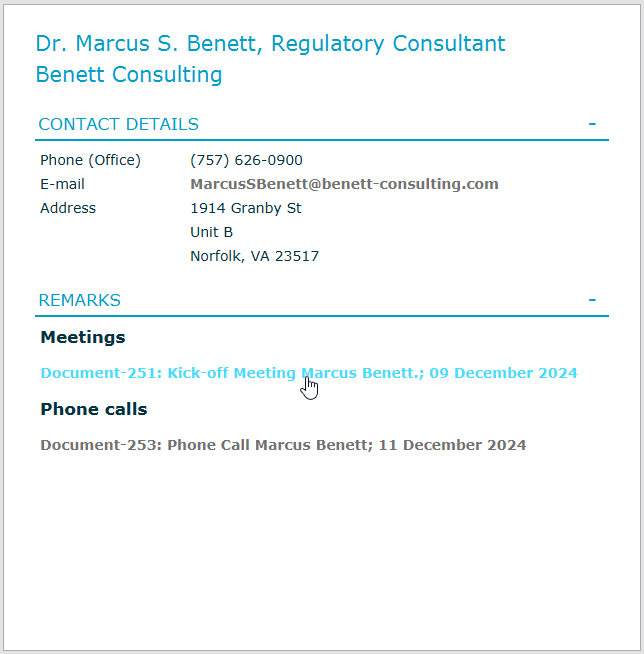Use case 1: Organize correspondence with a consultant
This use case involves managing correspondence about requirements for a specific project. The process ensures that all interactions are documented and accessible, helping to maintain clear communication and thorough records.
We meet members of the Stegmann Labs team, a fictitious contract laboratory where PLA 3.0 plays an essential role in every step of bioassay analysis.
About this use case
Xiaoling, the QA specialist at Stegmann Labs, utilizes Contact and Note documents to track her discussions with Marcus, the regulatory consultant. These documents let her organize and reference their correspondence, ensuring compliance requirements are clearly understood and properly addressed.
Xiaoling stores relevant communication records, including:
-
Contact information: Details about the organization and contact person, such as name, title, e-mail address, and phone number.
-
Communication history: Logs of meetings, e-mails, phone calls, and their outcomes.
This ensures that all communication is systematically organized, which lets her quickly retrieve the relevant details during audits or inspections. The audit trail of her documents automatically tracks who changed what, when, and why, ensuring compliance with regulatory requirements.
Contact information

Communication history
To clarify project-related details, Xiaoling regularly consults with Marcus. Using Note documents, Xiaoling keeps track of what they discussed in each case.

Linking contact information and communication history

With this setup, the Dashboard of the Contact document shows all linked documents and Xiaoling can quickly jump to the relevant details.

